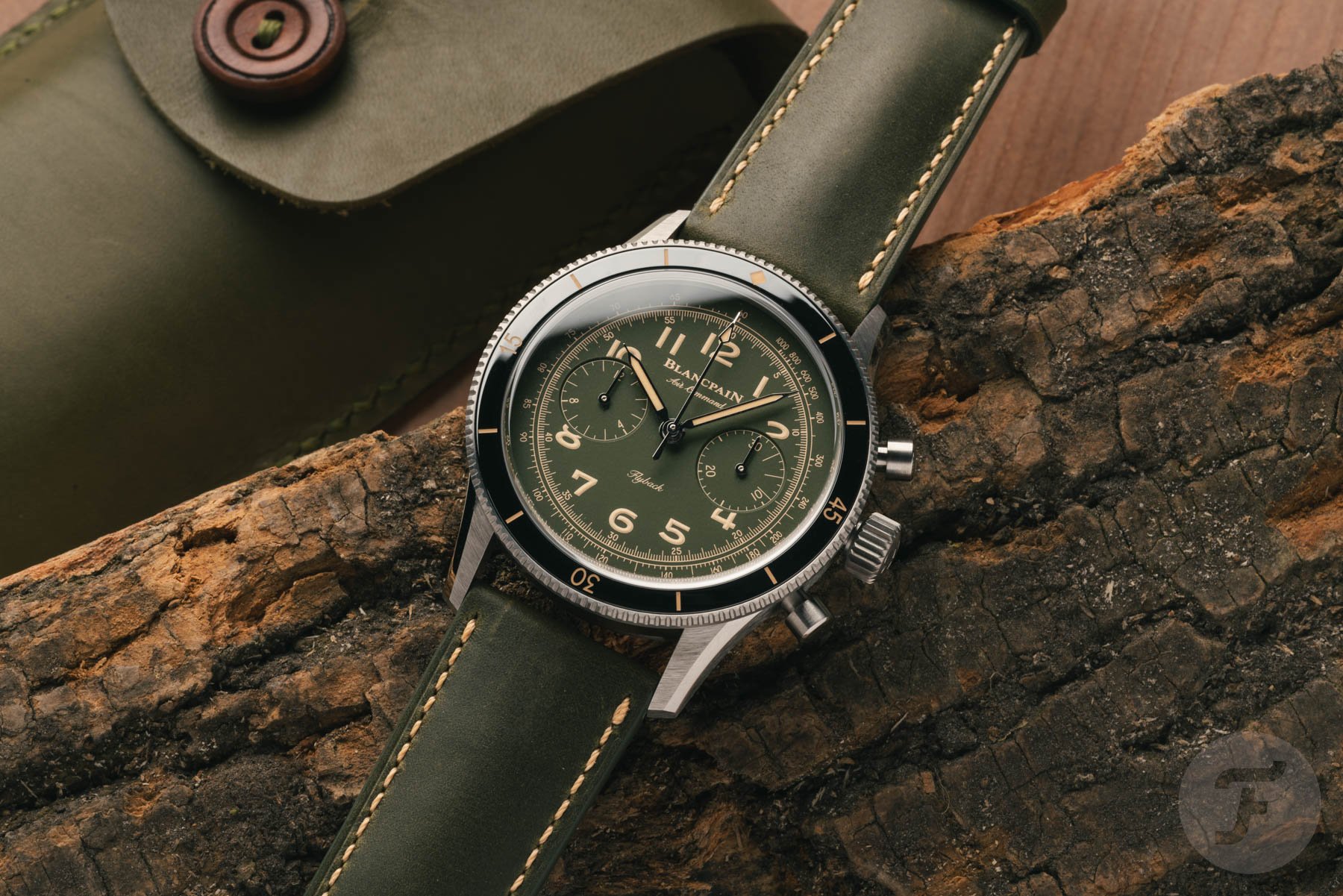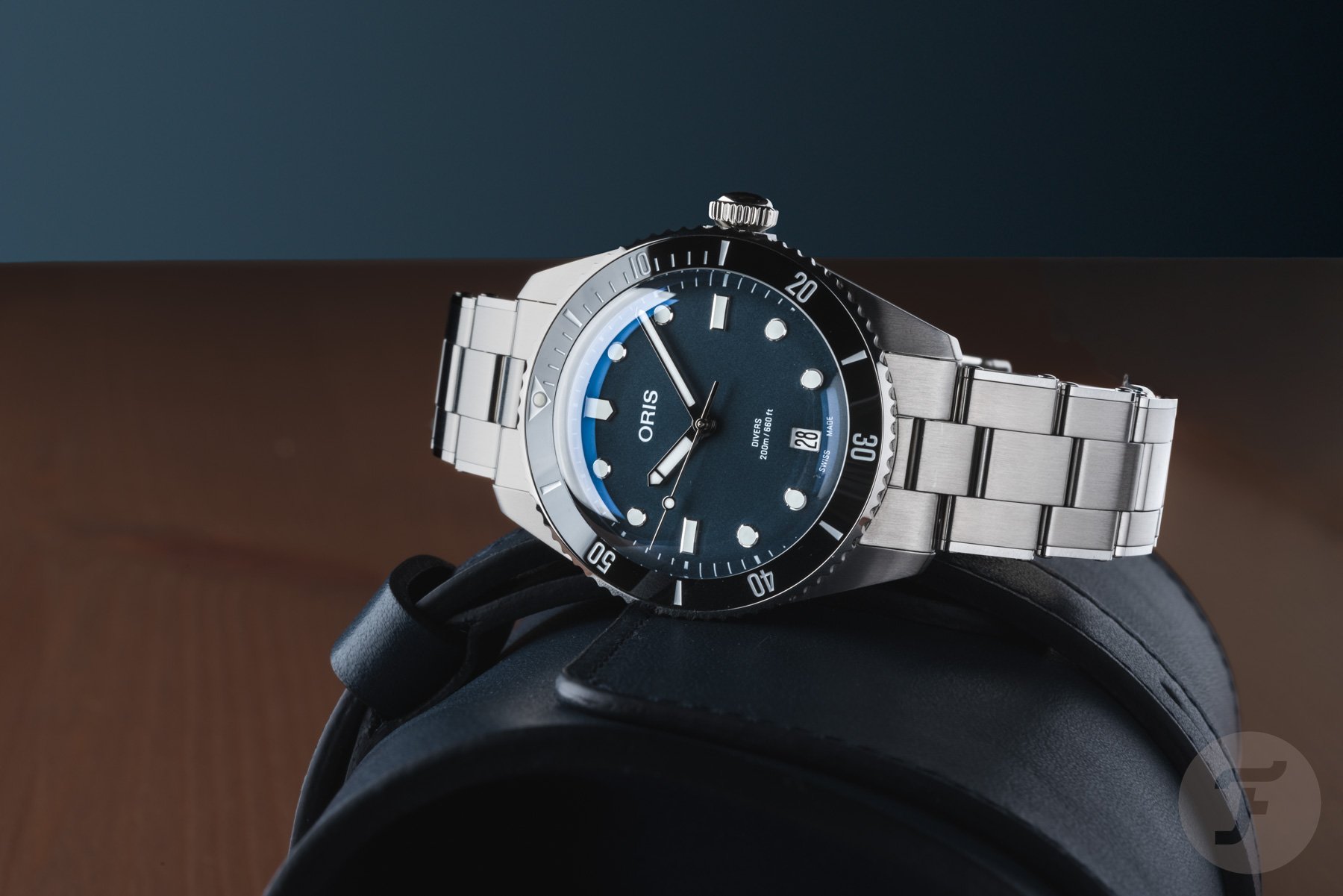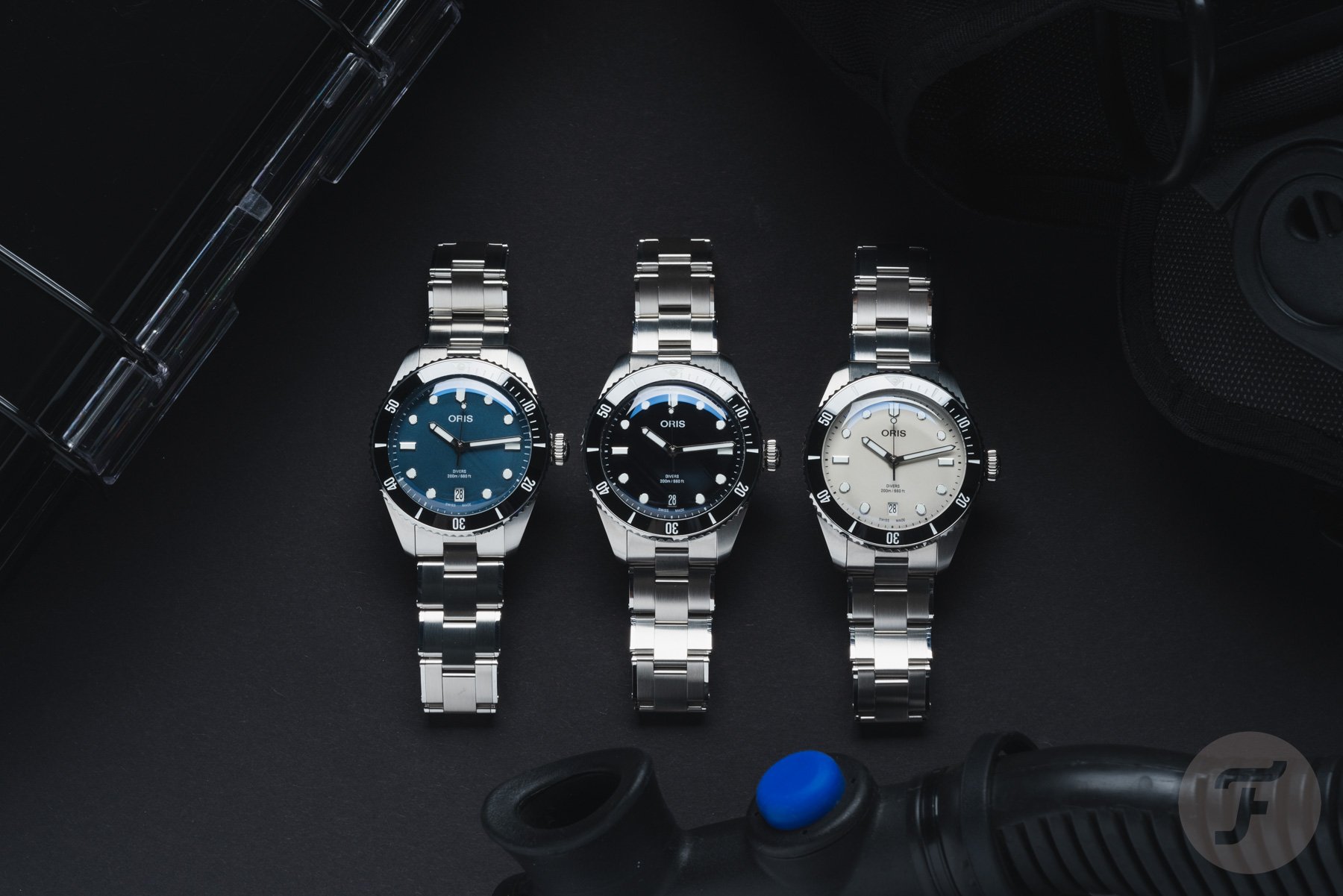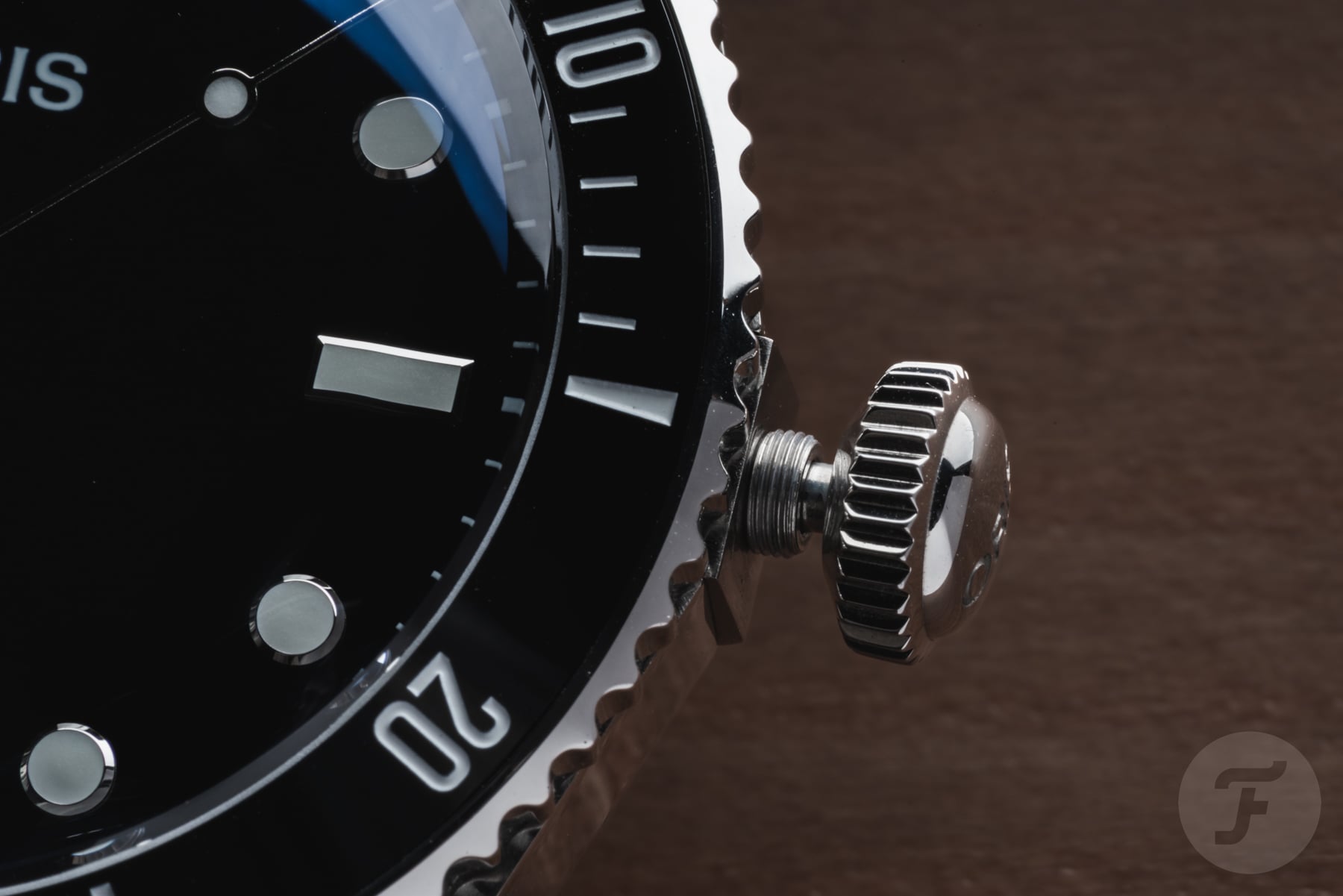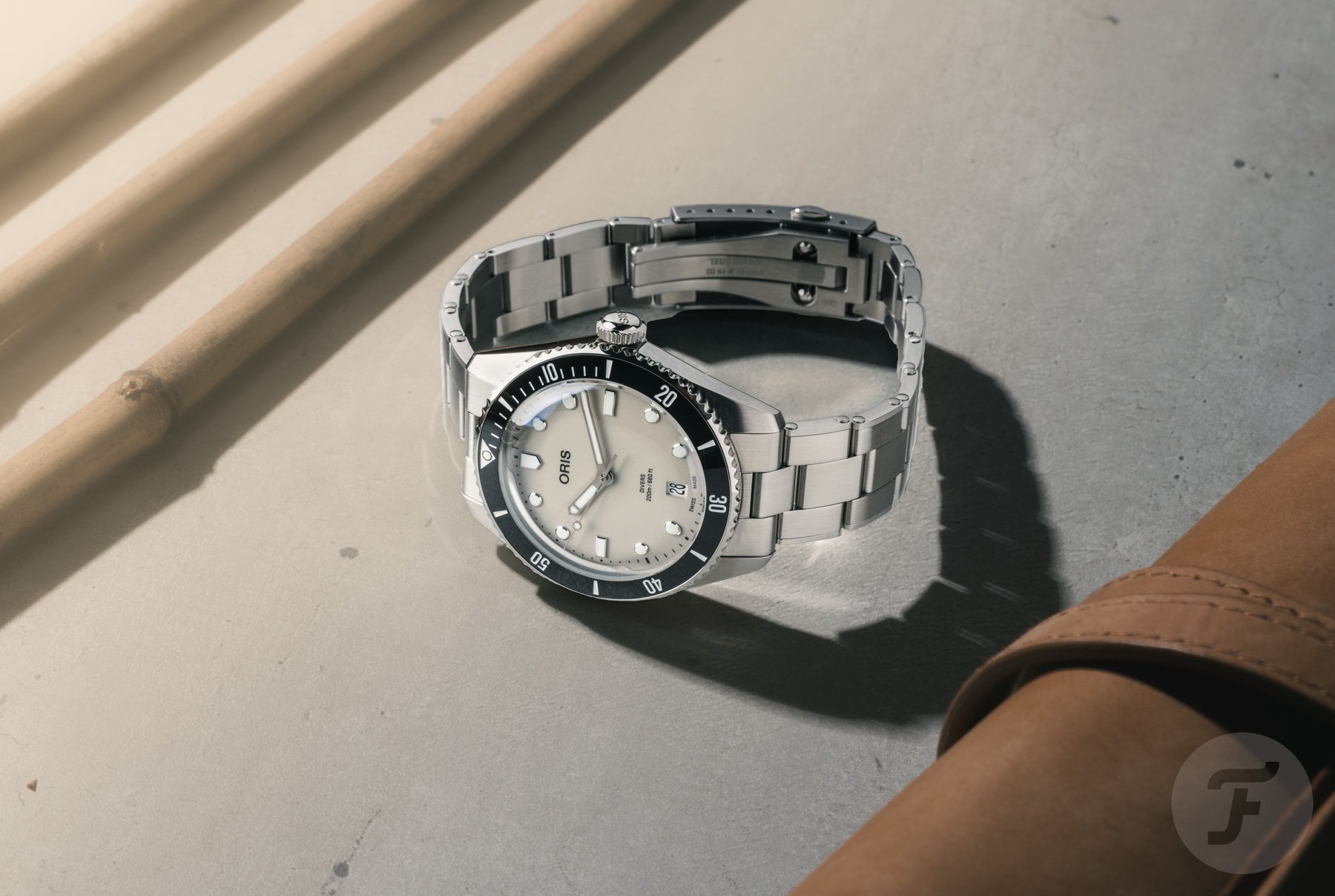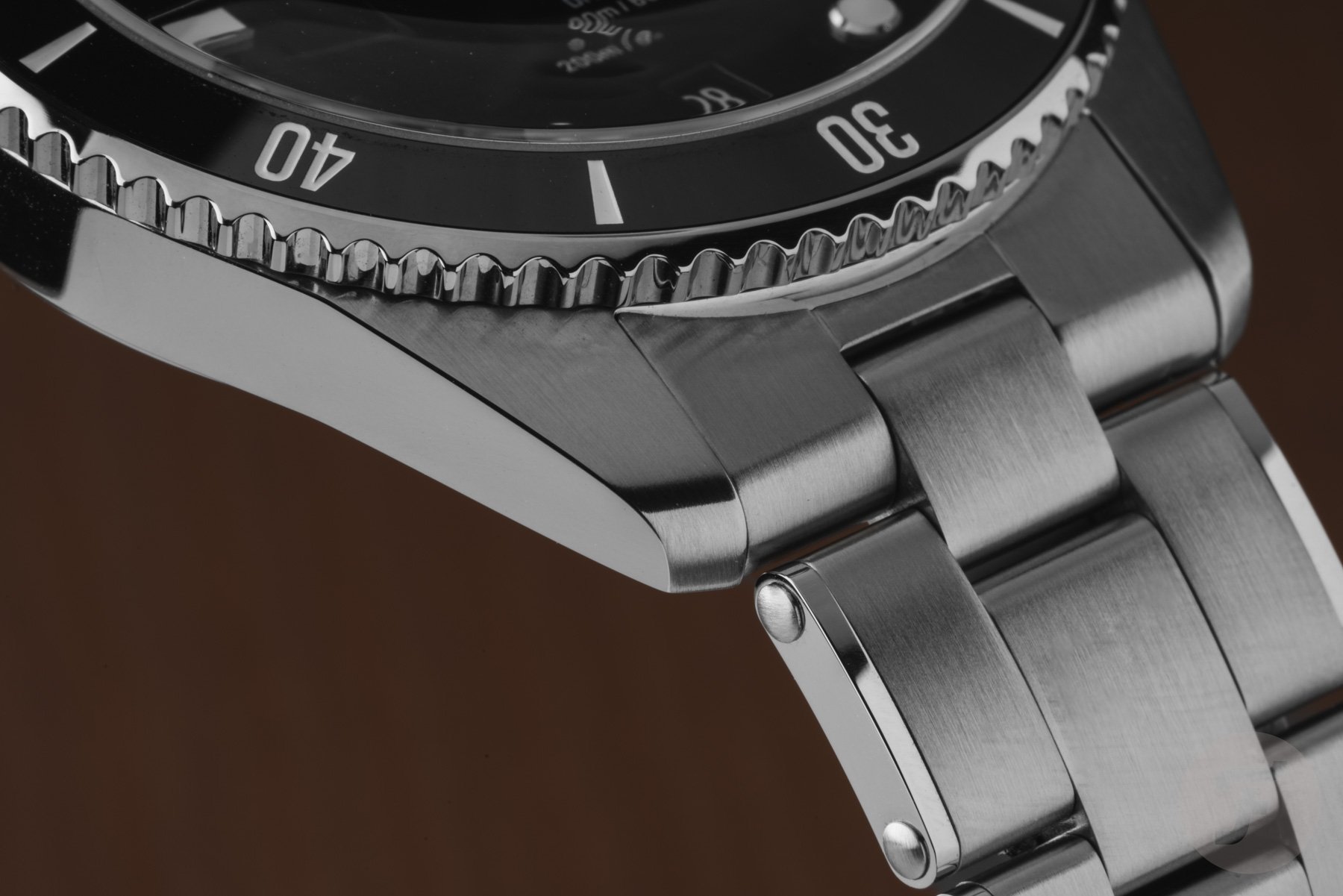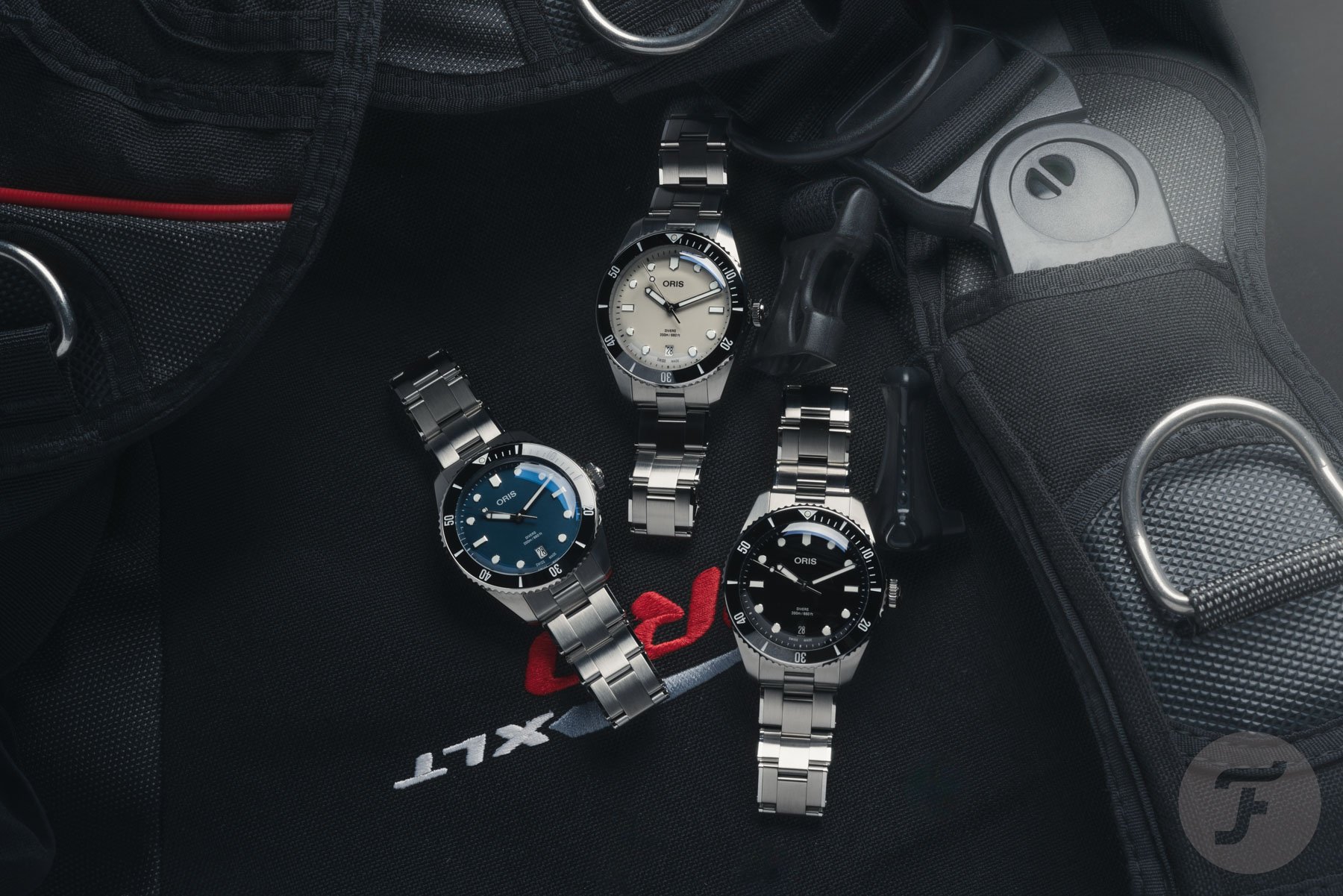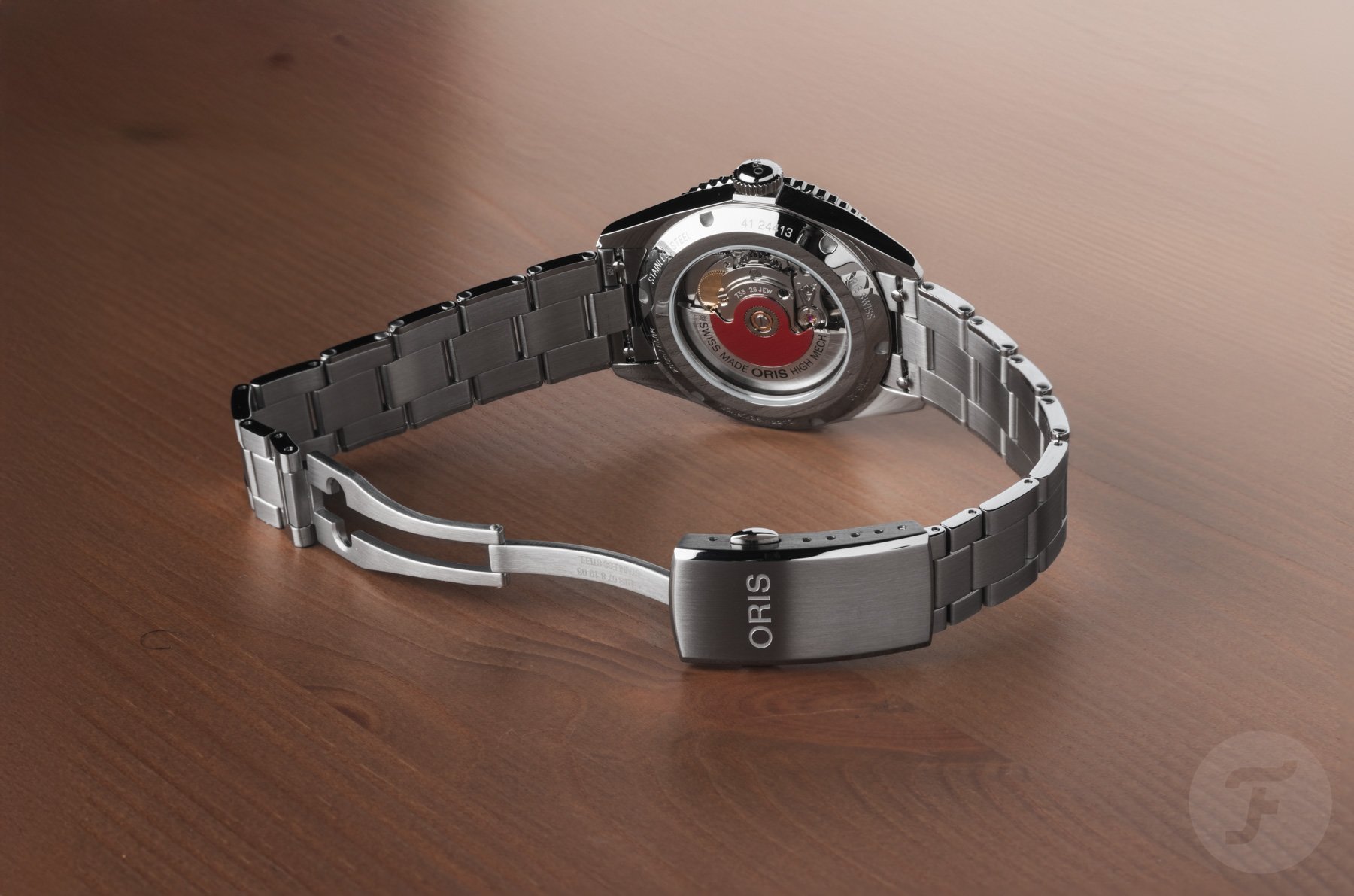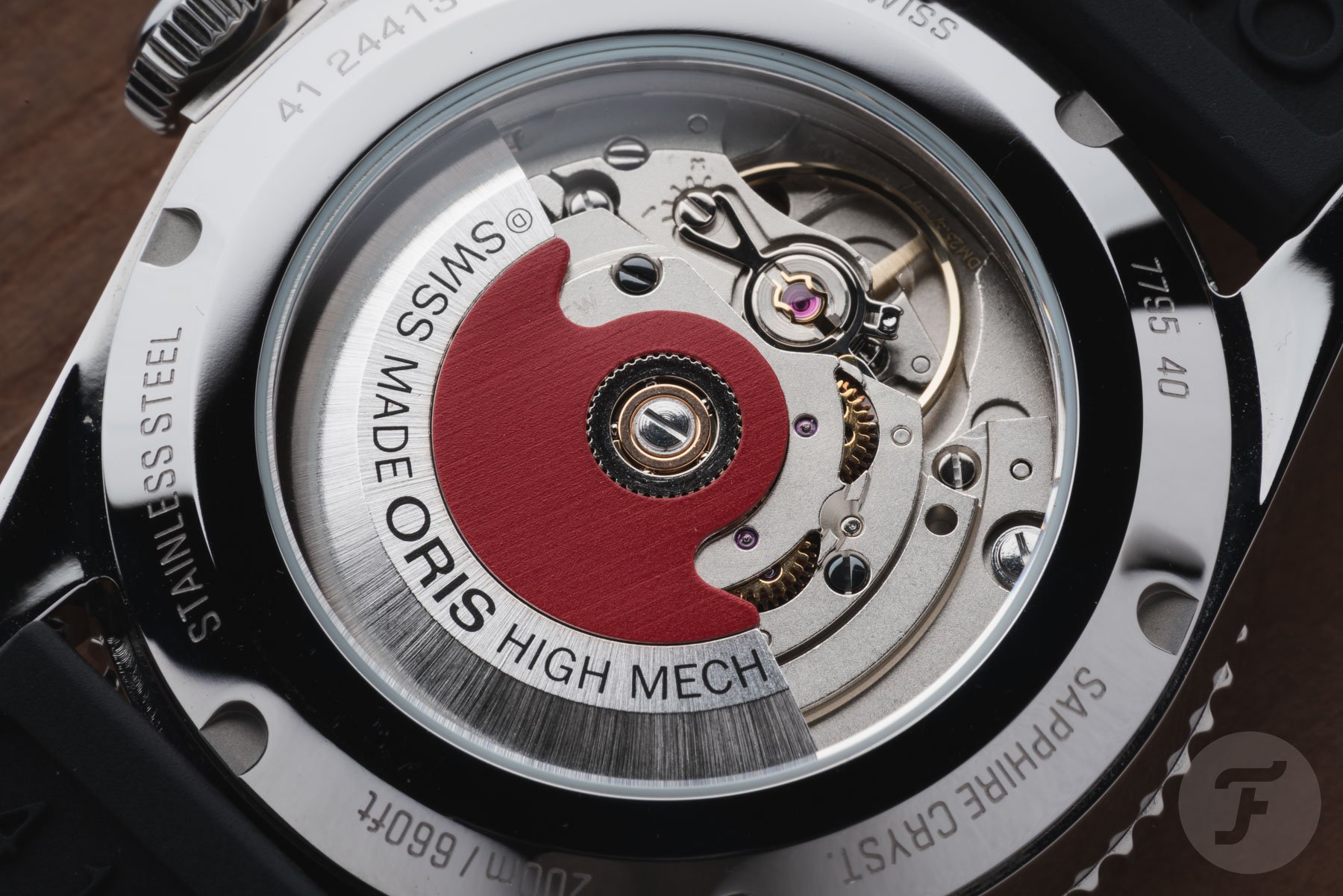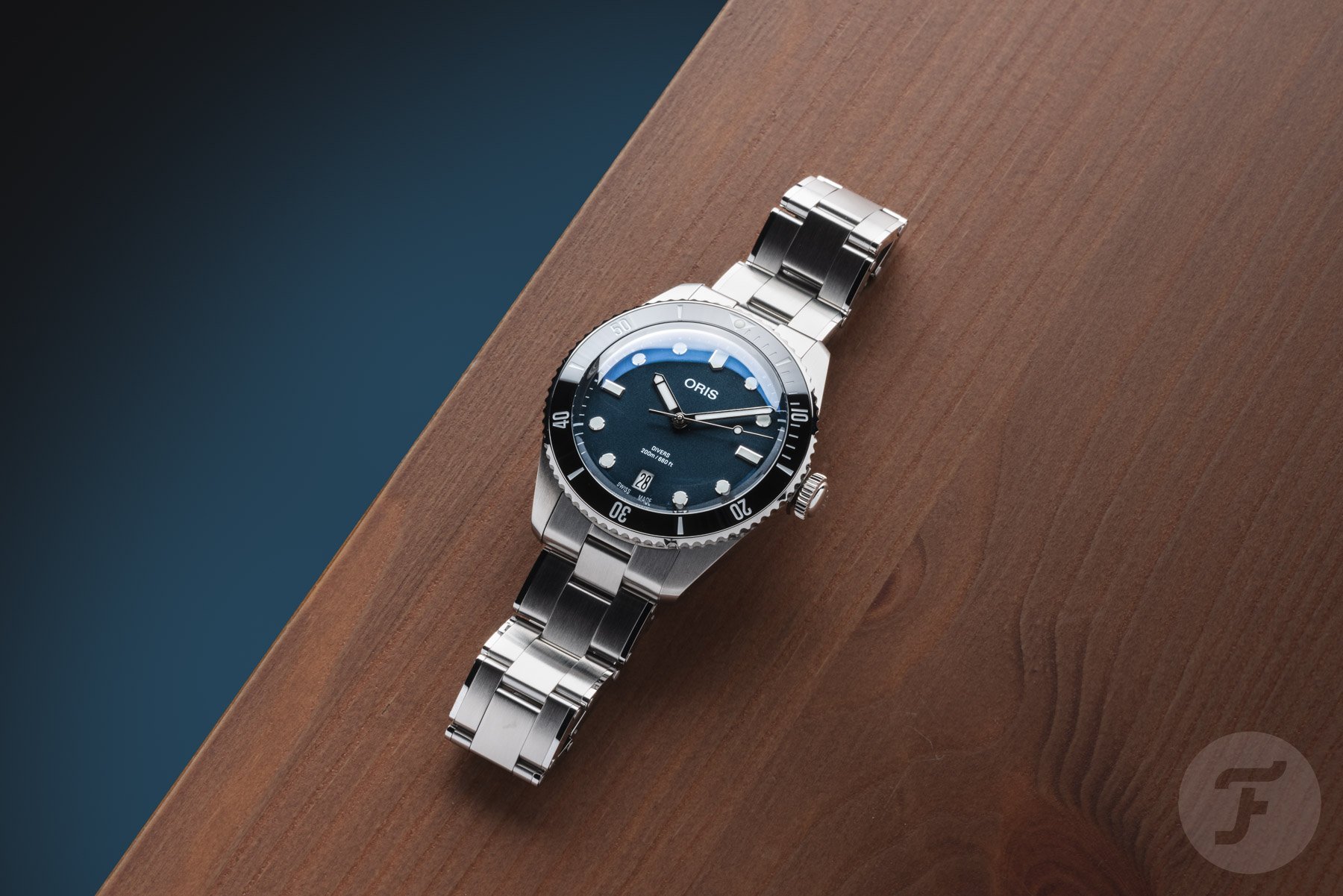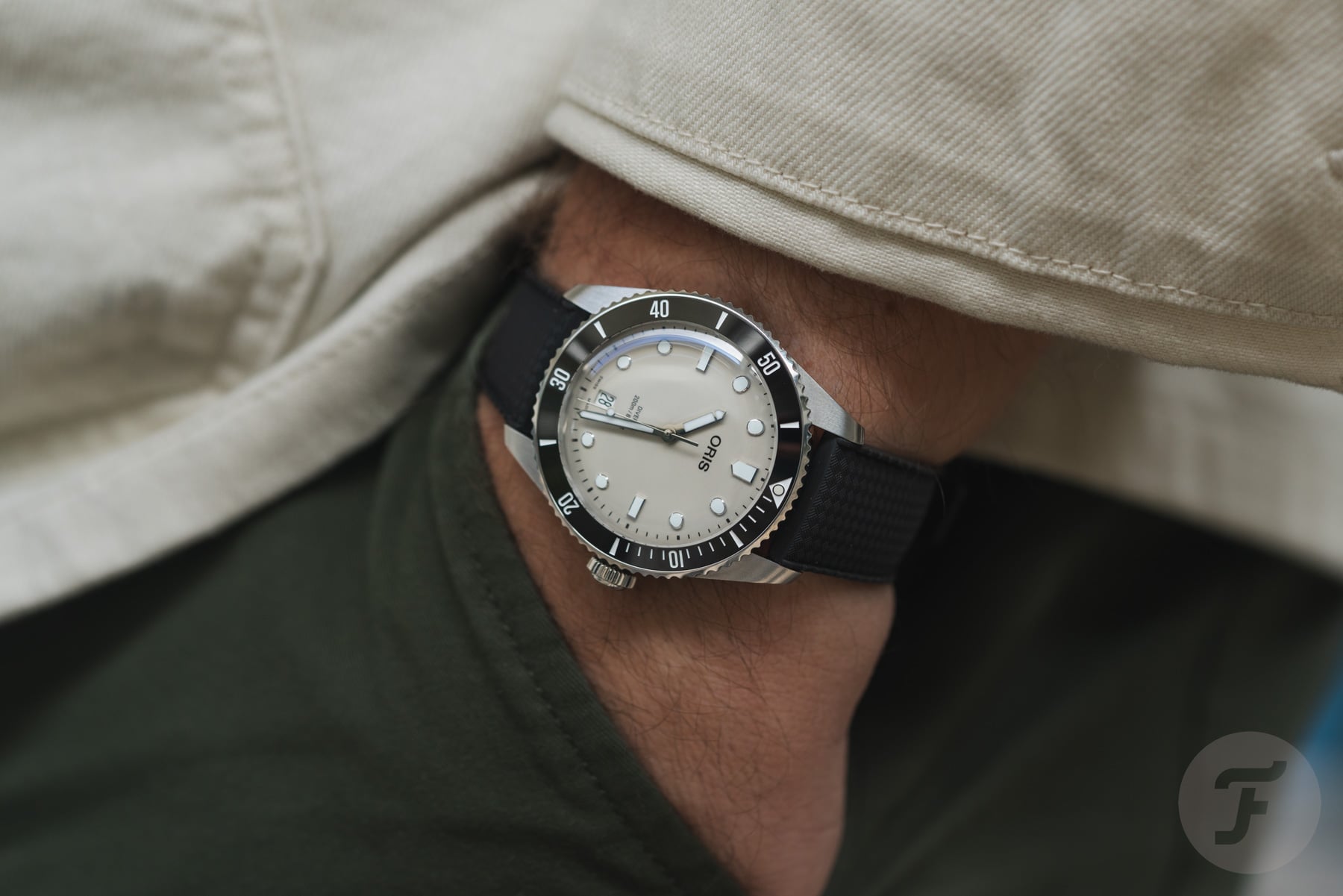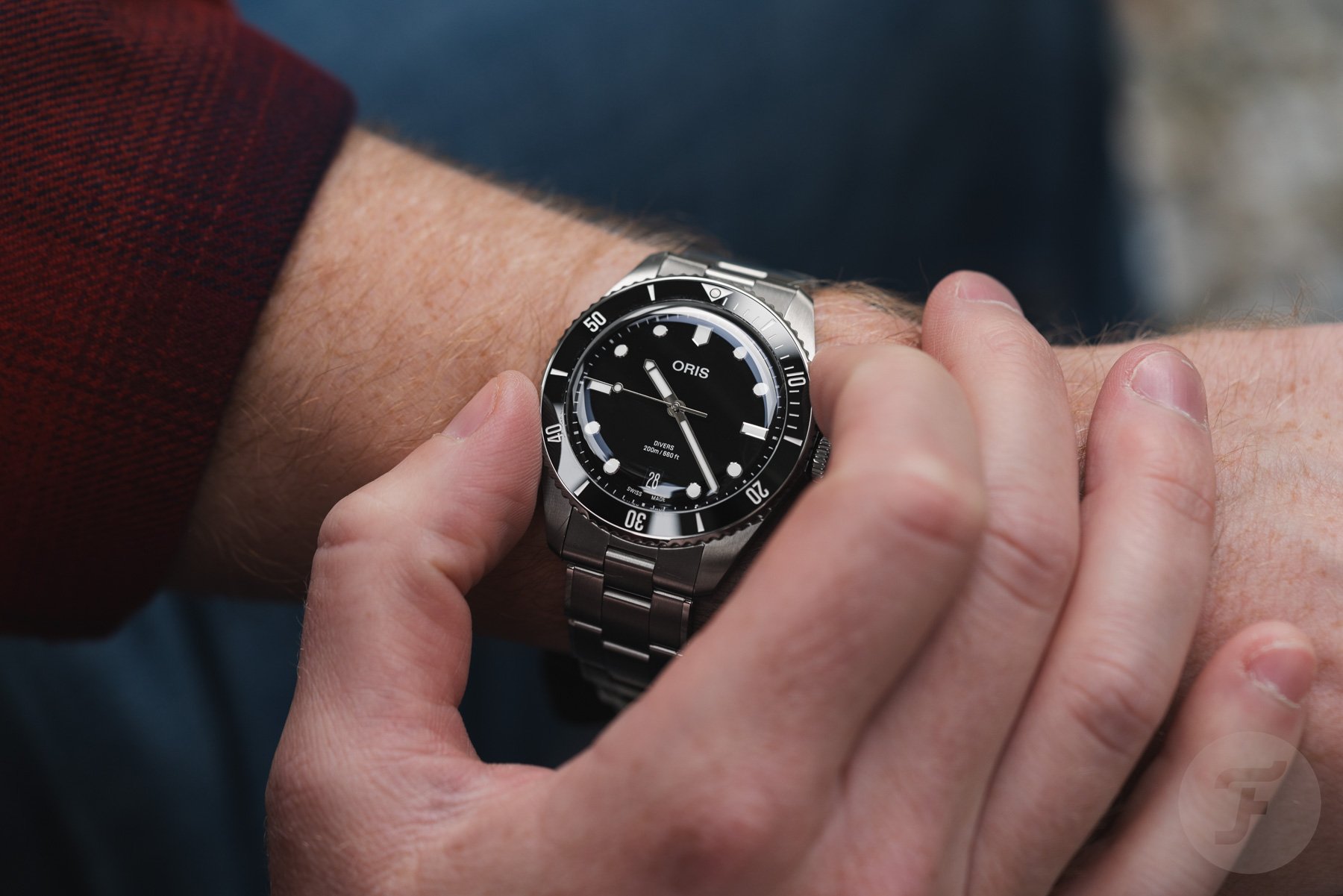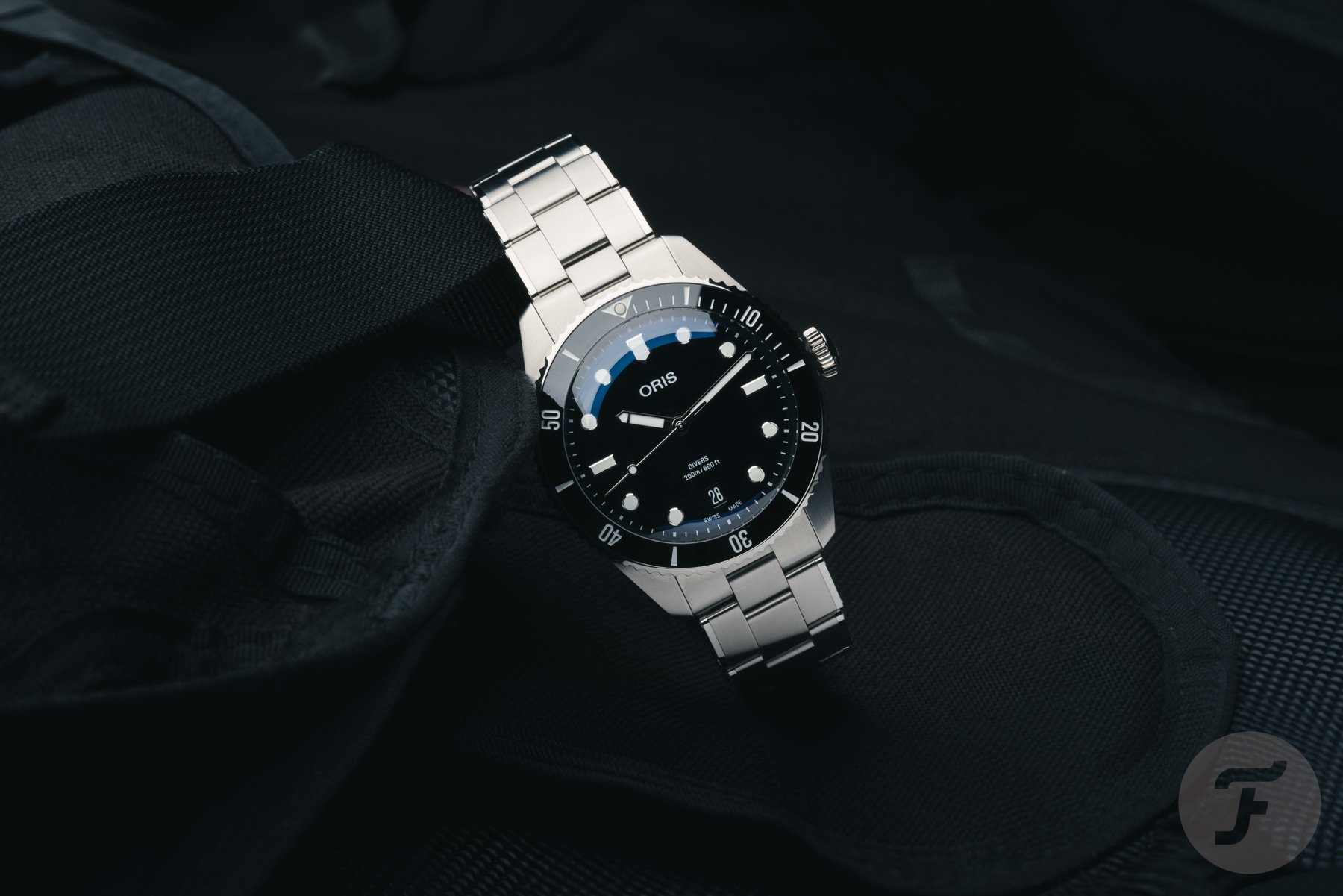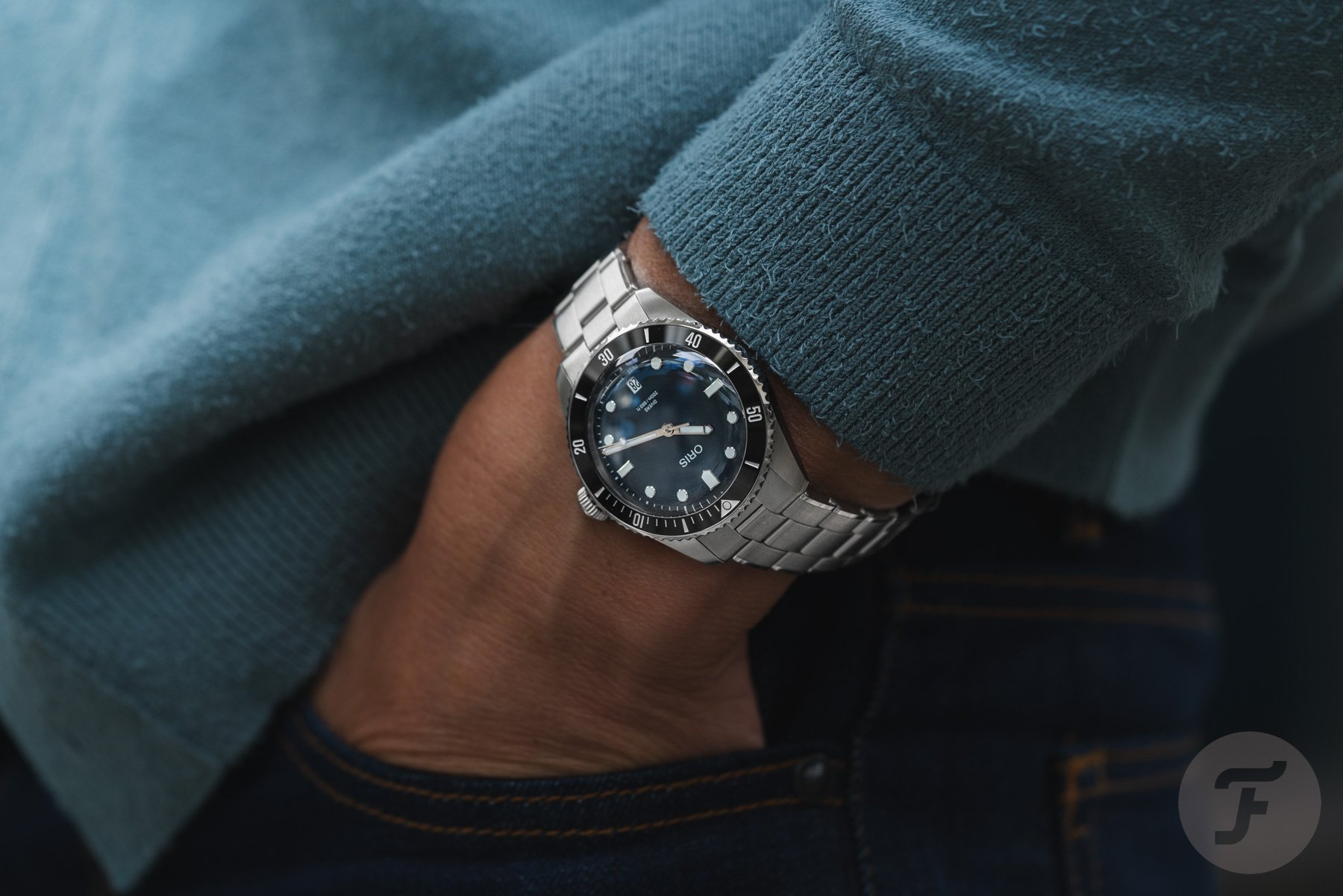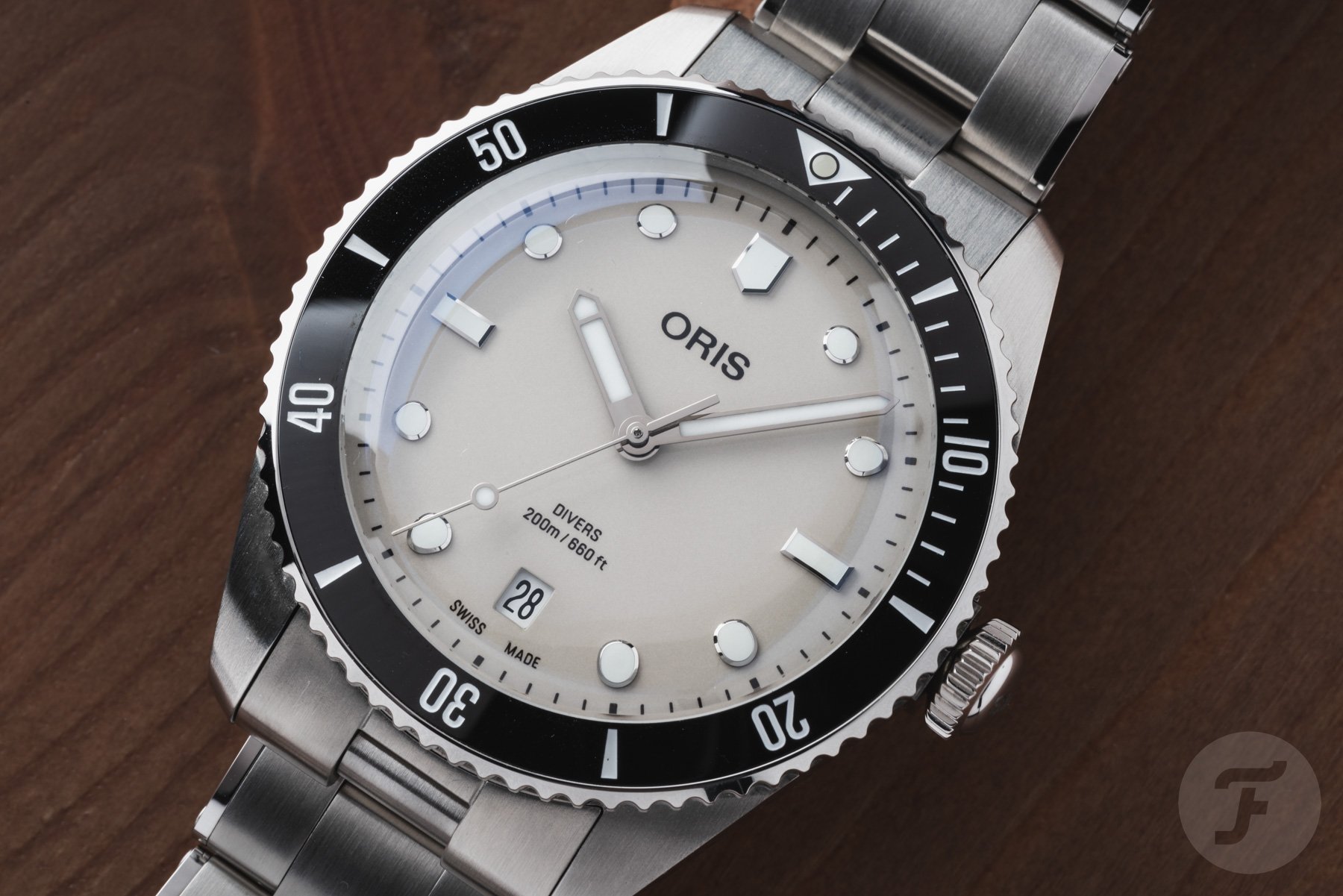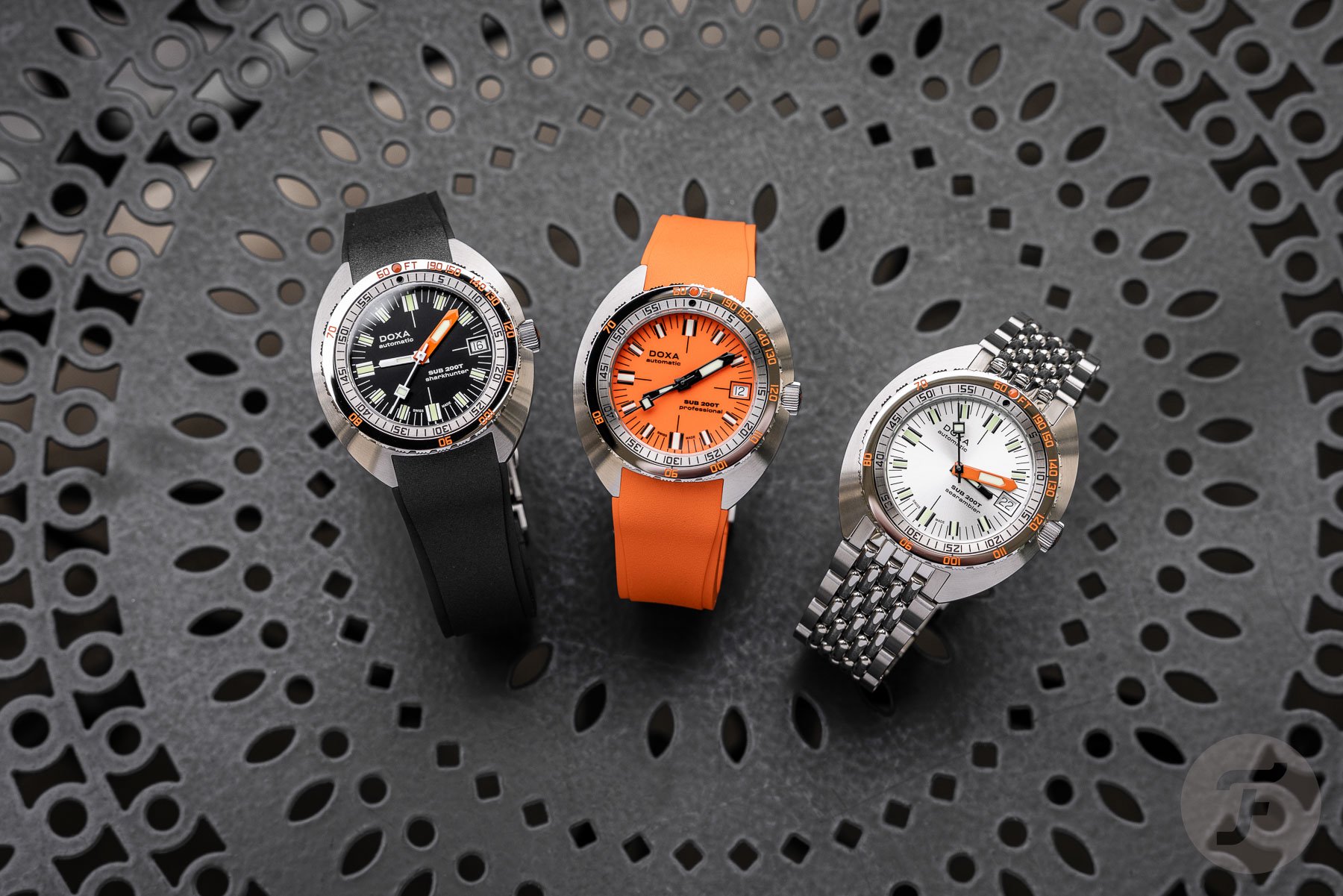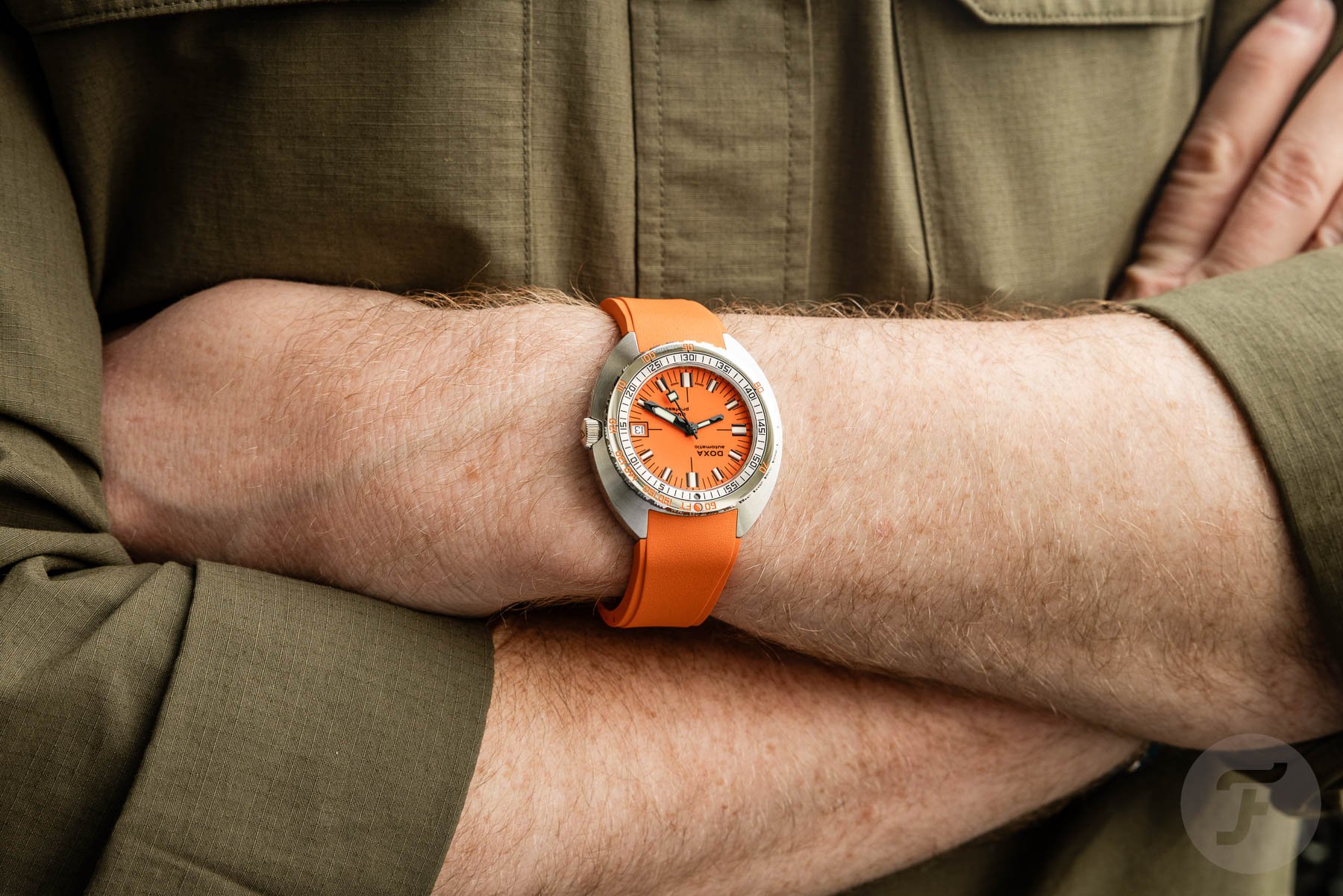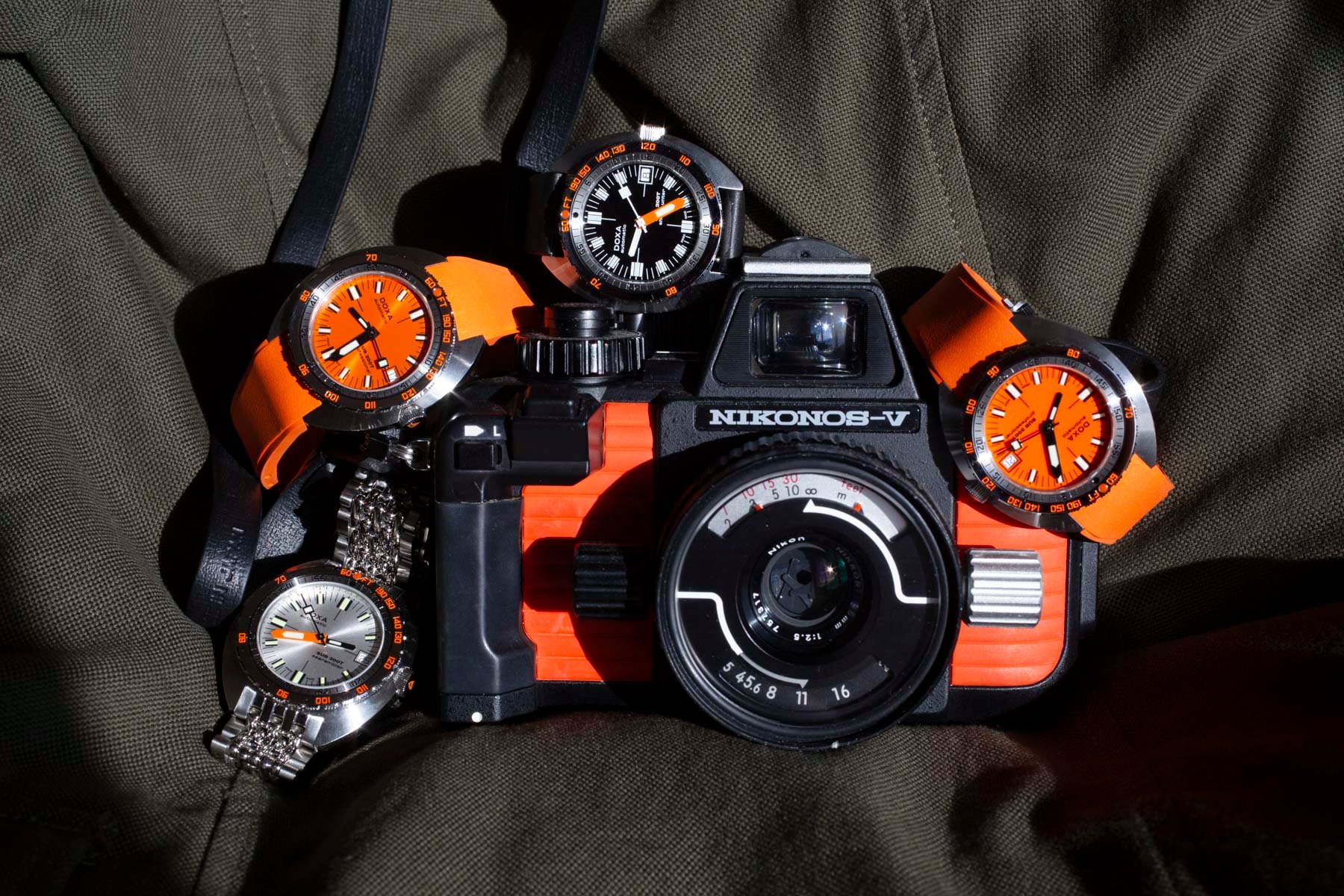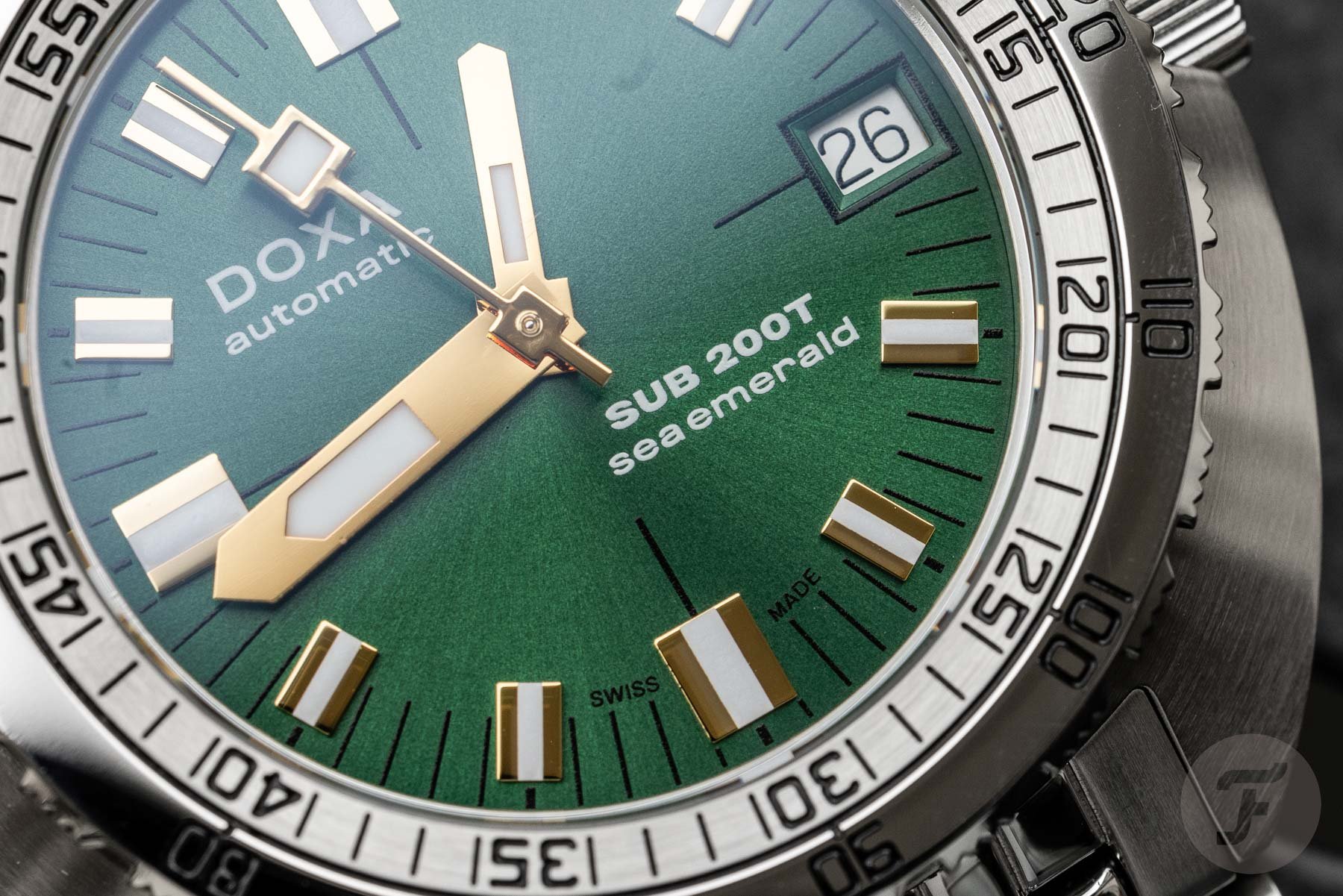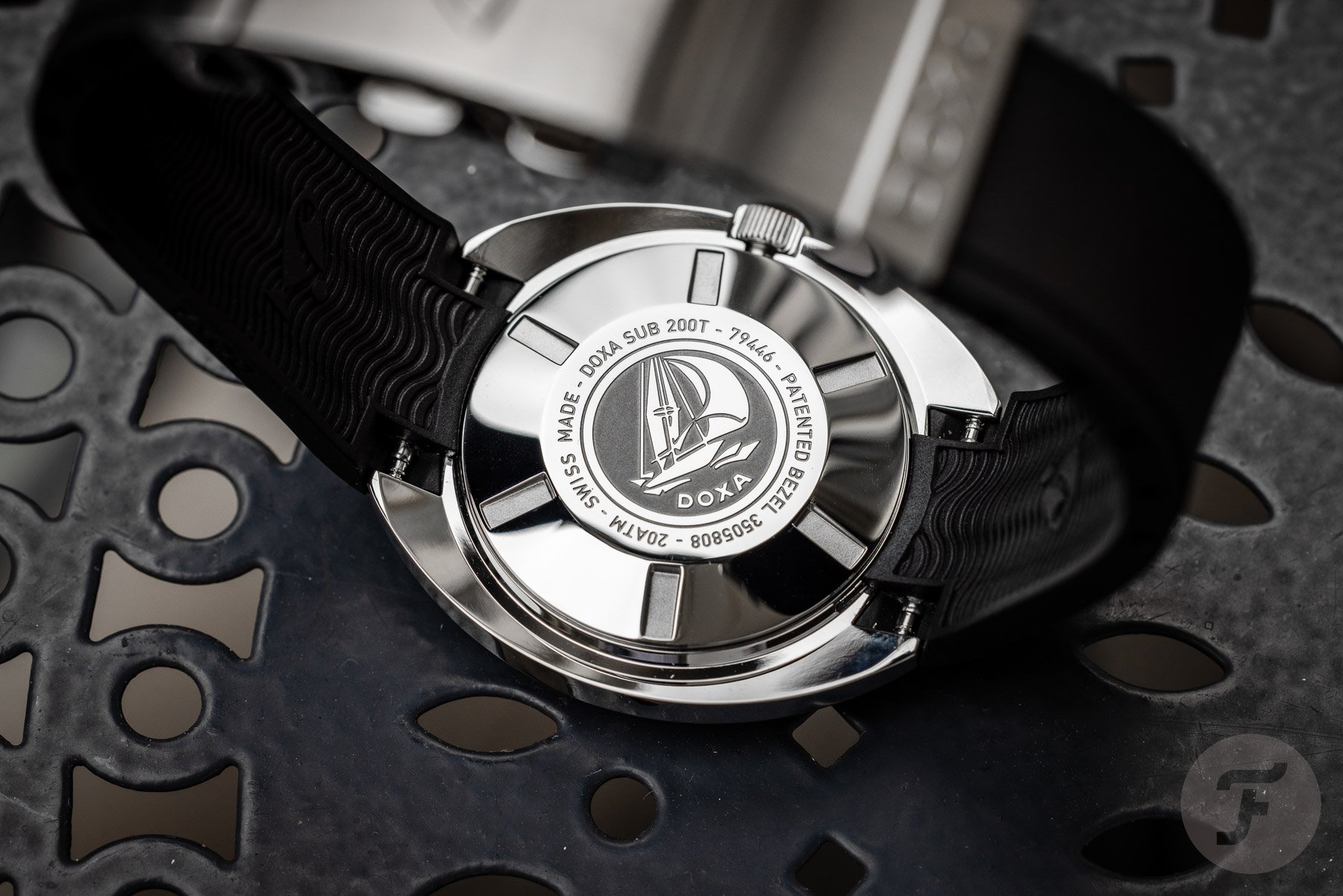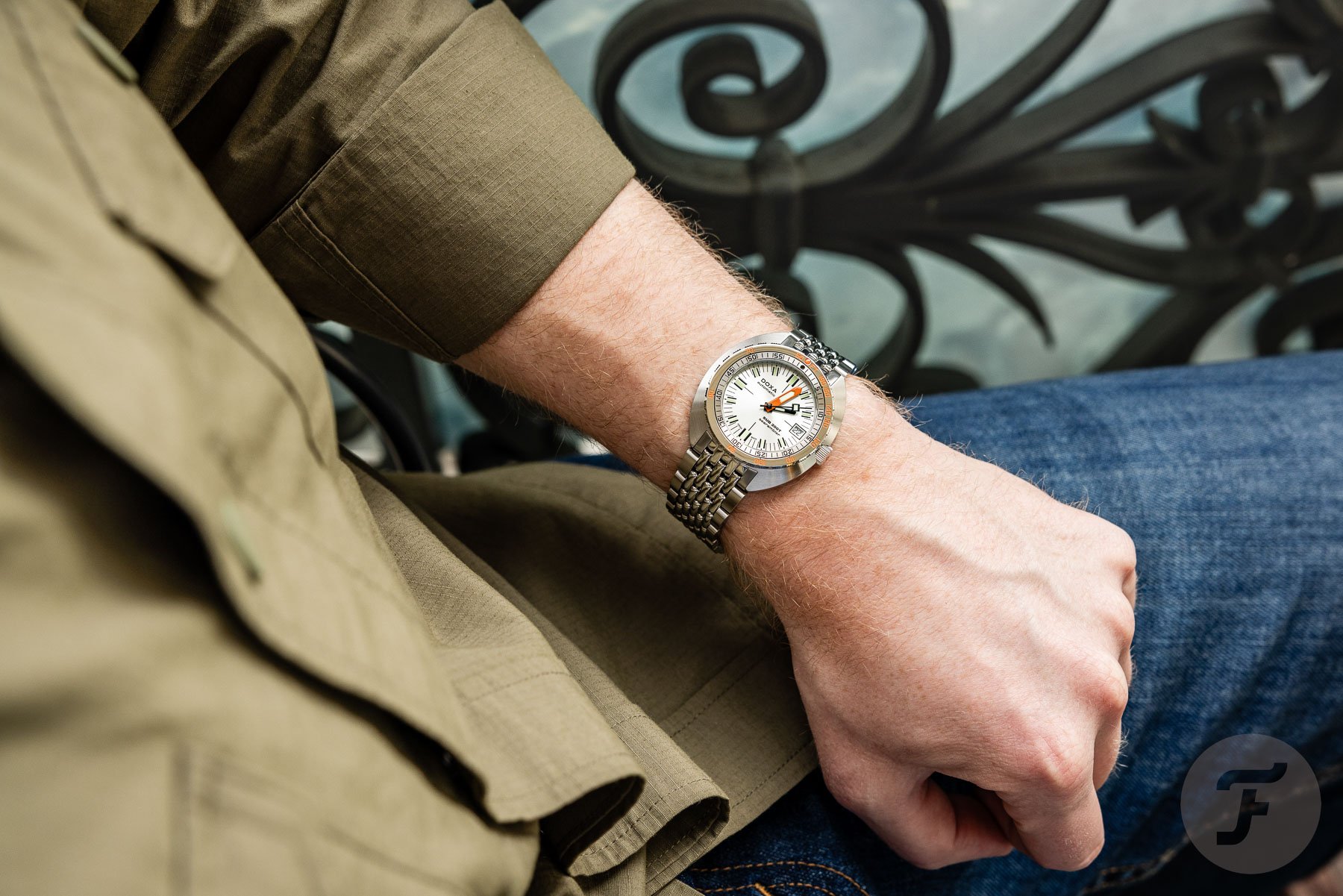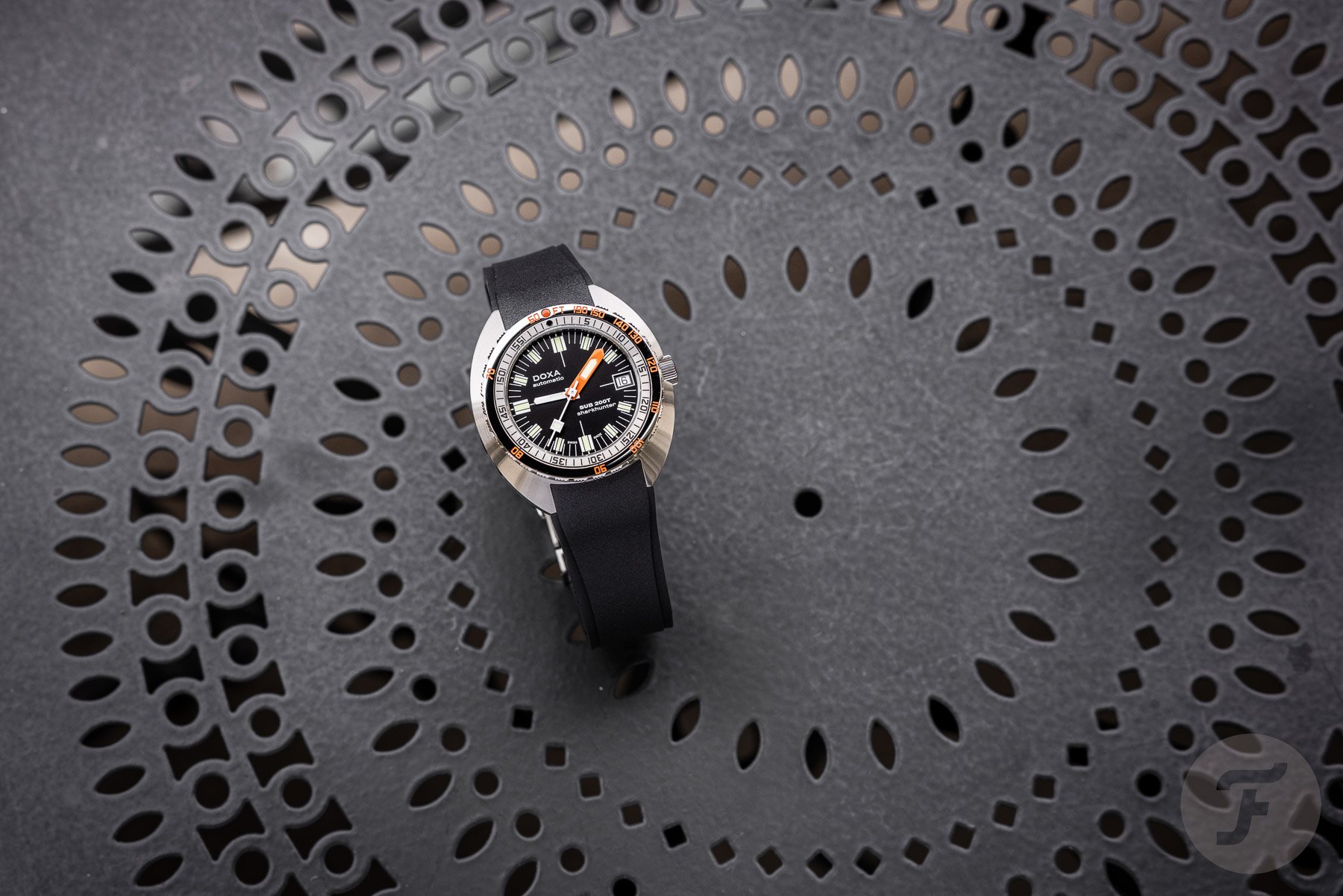Sunday Morning Showdown: Oris Divers Date Vs. Doxa Sub 200T
It’s Sunday morning, so it’s time for another installment of Sunday Morning Showdown. This week, we will focus on two vintage-inspired dive watches from 2024. The Doxa Sub 200T came out this past spring, while the Oris Divers Date debuted just last week. Both celebrate the style of vintage divers from bygone eras. The brand-new Oris Divers Date links back to the mid-1960s, and the Doxa Sub 200T takes after its bigger brother from a few years later. Which will come out on top? That’s up to you!
When Doxa unveiled the Sub 200T, the new model received practically universal praise. This smaller and thinner version of the legendary Sub 300(T) is a smart addition to the lineup for people who appreciate the ultra-recognizable style but crave a more wearable watch with the same looks. On top of that, at €1,590 on a bracelet, the Sub 200T is €400 cheaper than the Sub 300T and a whole €1,200 less than the Sub 300. How’s that for a tempting proposition? The new Oris Divers Date is an updated version of the brand’s popular Divers Sixty-Five. Oris implemented a string of updates to make this new Divers Date a great modern version of its predecessor. And despite the updates, Oris decided to stick to the €2,450 price. Let’s find out which of these two watches will claim the victory today.
Last week, on Sunday Morning Showdown…
But before we get into this week’s showdown, let’s take a look at last week’s battle of luxury pilot’s chronographs. In a very close match that could have gone either way, the Blancpain Air Command ended up taking the win. The titanium Air Command received 51% of your votes, leaving the Breguet with 49%. It’s a result that was reflected in the comments. While many people love the story and the design of the Type XX, the date window is a dealbreaker for others. Regarding the Blancpain, the foggy backstory and the titanium and green execution were, apparently, not your favorite aspects. However, the watch still took the win in the end, making it the champion of retro luxury pilot’s chronographs. But that’s enough about last week’s battle; over to Jorg and Mike!
Jorg: Oris Divers Date
The Oris Divers Sixty-Five has long been a favorite of mine. With the Divers Sixty-Five 12H Calibre 400, the Chronos Limited Edition, and the Momotaro Limited Edition, the brand from Hölstein created a series of exciting variations. But while those were my favorite versions, overall, I would say that the Divers Sixty-Five has been my favorite line of watches within the Oris collection. There is a general appeal to it that makes the Divers Sixty-Five and the new Divers Date very likable.
It’s an appeal that must feel familiar to our readers and to you as well, Mike. The great success of the Divers Sixty-Five is about so much more than the limited editions the brand created. Rather, its success comes down to a combination of factors.
From the aesthetics inspired by the brand’s classic 1960s divers to the modern-day execution and the friendly price, several things contribute to the model’s great success. It has always been a go-to pick around the €2K mark. As such, it has also been a great entry point into the world of luxury watches for many people.
From the Divers Sixty-Five to the Divers Date
Oris keeps the hits coming with the new Divers Date. The new watch offers some amazing updates compared to the Divers Sixty-Five. Granted, the name is not one of them, although it fits the watch’s general appeal. If you don’t like the aesthetic, you probably don’t like dive watches. Of course, I’m having a bit of fun, Mike, but you understand what I’m getting at. The Divers Date fits that general mold of dive watches from a bygone era. Still, it has enough charm and identity for people to immediately recognize it as an Oris Divers model.
Let’s review the updates and find out how Oris improved something that was already good. First, the Divers Date features an updated 39mm stainless steel case that is 12.1mm thick and 46mm from lug to lug. Thanks to the new case’s construction, the water resistance has increased from the Divers Sixty-Five’s 100 meters to 200. You will find the nicely proportioned screw-down crown on the right side of the new, sleek-looking case.
Beautifully executed updates
The bezel was also redesigned to offer more grip thanks to more pronounced teeth, and the bezel insert is now ceramic instead of aluminum. To start, Oris has released three dial variations inspired by colors from the 1960s. The first is a glossy black dial, the second is a matte grayish-blue dial, and the last is a beautiful light cream dial. The last two increase the retro feel significantly and have an almost powdery look to them that I thoroughly enjoy.
What also stood out immediately when I held the watches was how well the slender case flowed into the new bracelet. It creates a nice, slim profile that makes these watches super comfortable on the wrist. The new bracelet is also a welcome addition that adds to the luxury feel of the Divers Date. It now has thick, mirror-polished (real) rivets that contrast nicely with the other brushed links. On top of that, the bracelet has quick-release spring bars for increased practicality.
A trusted movement for the Divers Date
If you turn the watch around, you are greeted by the red Oris rotor of the brand’s caliber 733. Essentially, this is a Sellita SW200-1 with a customized rotor. The automatic movement operates at 28,800vph, has 26 jewels, and offers 41 hours of power reserve. By choosing this Sellita movement, Oris can keep the watch much more affordable than other models with the brand’s Calibre 400.
I think that is a smart choice, and I love that Oris opted to keep the price the same as that of the Divers Sixty-Five at €2,450. On top of that, you do not just get the watch on the bracelet; Oris throws in a rubber Tropic-style strap as well.
Considering all the updates, a price increase would have been logical, but Oris properly read the room and decided against that. I also checked the old price of the Divers Sixty-Five from 2016 when this dial style came out in the 42mm size, and it was €2,050 on the bracelet then. A price increase of €400 in eight years is very reasonable, especially if you understand what you get in return. While the new Oris Diver Date is more expensive than your Doxa, Mike, I believe it is the best in class at its €2.5K price point.
What makes it better than the Doxa Sub 200T?
That becomes very apparent when you put the watch on your wrist. It is an absolute joy to wear thanks to its slim profile, the beautifully proportioned case, and the increased visual brilliance. That last aspect plays a big part in the feeling of wearing a true luxury watch. I was seriously impressed by the many updates and how they translate to a watch that feels and looks like a better version of the Divers Sixty-Five. This also easily justifies its higher price point than the Doxa Sub 200T.
While I do like the new Sub 200T, the famous Doxa aesthetic has never found a home in my heart. I understand its appeal to fans of classic dive watches, and I love its backstory, but there is a certain oddball character to it that is not for me. Just a couple of examples are the bezel and crystal proportions. The bezel feels too wide and the crystal too small. On top of that, the polished part of the bezel is an absolute scratch magnet. The handset also looks awkward with its huge minute hand and a rather puny hour hand. All in all, these things create a quirky aesthetic that I like but do not love.
The better daily wearer triumphs
That’s why the Sub 200T would always be an extra watch in my collection rather than a daily wearer. I would get it out for the summer and wear it during a trip on a rubber strap. But after the holidays ended, the watch would end up in the box again, and I’d resort to a better daily wearer. This is a quality that I usually look for in a watch when considering it for my collection.
And that’s where the new Oris Divers Date shines as the far better option in today’s battle. Its looks, execution, and overall appeal make the Oris a true winner, not just in this battle. But let’s start with taking today’s trophy.
Mike: Doxa Sub 200T
Thanks for the convincing take on the Oris Divers Date, Jorg. While I haven’t seen those watches in person yet, I agree they’re a nice refresh of the Divers Sixty-Five with some appealing upgrades. Today, though, I’m here to talk to you about the Doxa Sub 200T. I have seen these in the metal, and this is a great match-up because both contenders boast retro styling in wearable case sizes.
Indeed, the Sub 200T is incredibly comfortable on the wrist. It measures 39mm wide by 41.5mm long and just 10.7mm thick. Let that sink in because the traditional Doxa Subs we’ve grown to love are a bit chunky or plate-like watches on the wrist. The longstanding Sub 300T is 42.5mm in diameter and 13.65mm thick for good measure. My favorite, the Sub 300, has a similar diameter and is 13.4mm thick.
Still a real Doxa
Even though the Sub 200T is a smaller model, it still offers a 200m depth rating and the famed stainless steel “no-deco” bezel that helps divers calculate how long they can stay underwater at a given depth without decompression stops. A screw-down crown helps reinforce the watch’s intent.
A seemingly endless number of options
In recent years, Doxa has expanded its dial color offerings by a wide margin. The days of just choosing between an orange Professional, black Sharkhunter, and silver Searambler are long gone! If my math is correct, I count 13(!!) dial options for the Sub 200T. Some hues are available in a matte or sunburst edition. Then, the number expands further because each version comes with a beads-of-rice bracelet or comfortable rubber strap. That’s a benefit over the Oris, although I am sure more variants will come to market in due time.
Made for everyone
I think it’s fair to say that most watch brands don’t address women with capable, mechanical dive watches. The Doxa Sub 200T is a bona fide option for all sexes because of its size and wide array of color choices. Normally, when we see these types of watches, they have watered-down specs and/or quartz movements. Thankfully, the Doxa comes correct.
The Sub 200T uses the same movement as the Oris. The Sellita SW200-1 isn’t on display, but that’s fine. Instead, the watches feature the traditional Doxa case back with an engraved sailboat and six deeply carved case-opening grooves. Again, it’s a testament that Doxa wants these watches deemed as part of the (hard)core collection.
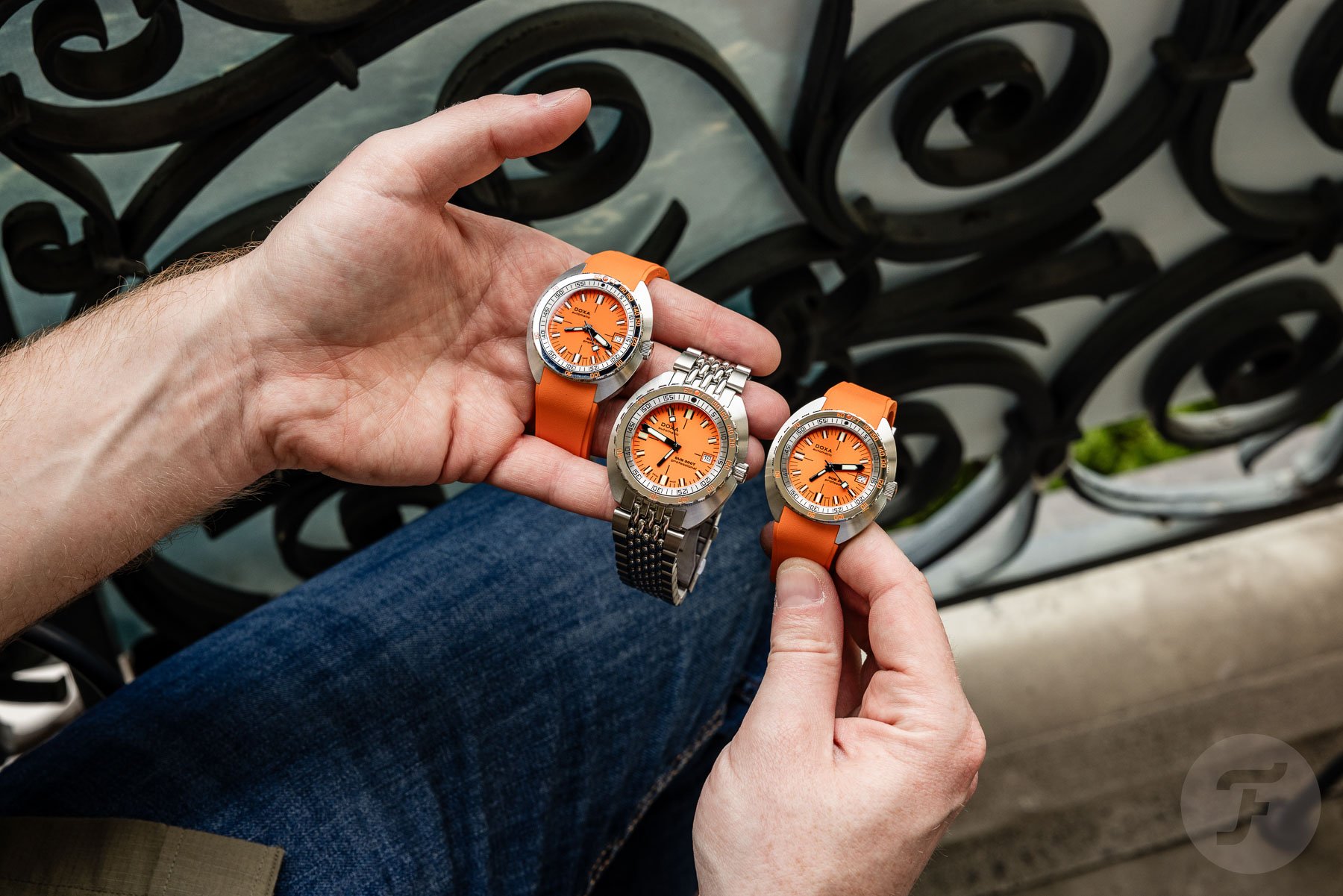
The Professional Sub 200T with the iconic (matte) dial (left) and the sunburst version flanking the bigger Sub 300T
Classic looks
The Doxa indeed has a very specific aesthetic. The C-case, distinctive dial, and characteristic bezel make it more of a tool watch. However, the more colorful dial options help tone down this narrative. Is the Oris really a better daily watch? It’s certainly more of a mainstream-looking watch with its Oyster-style bracelet and 60-minute dive bezel. But not everyone wants to channel a Submariner when picking a watch, and I think the Sub 200T provides a wearable daily alternative. Plus, there’s the price difference.
Big savings over the Divers Date
The Sub 200T models are priced at €1,550 on a rubber strap or €1,590 on the steel bracelet. Both 18mm options include a wetsuit extension. The bracelet version is more than €800 less than the Oris Divers Date, which is sizable. The fact that both are seen as reasonably priced only underscores how sweet a deal the Doxa Sub 200T is.
Time to choose
Today, we have two dive watches with vintage roots. Both, however, feature modern movements and capabilities. They’re also reasonably sized and reasonably priced. It’s your job to decide which one will get your vote. If you feel like telling us why you opted for the Oris or the Doxa, just leave your comments below. Thanks for voting!

